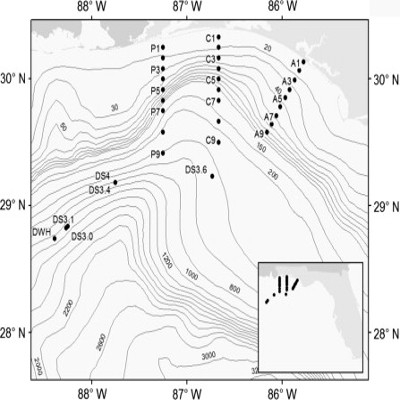
PAH concentrations across the FL Panhandle
Polycyclic aromatic hydrocarbon concentrations across the Florida Panhandle continental shelf and slope after the BP MC 252 well failure
Abstract
The Florida Panhandle continental shelf environment was exposed to oil from the BP oil well failure in the Gulf of Mexico during 2010. Floating mats of oil were documented by satellite, but the distribution of dissolved components of the oil in this region was unknown. Shipek® grab samples of sediments were taken during repeated cruises between June 2010 and June 2012 to test for selected polycyclic aromatic hydrocarbons (PAHs) as indicators of this contamination. Sediments were collected as composite samples, extracted using standard techniques, and PAHs were quantified by GC/MS-SIM. PAHs in samples from the continental slope in May 2011 were highest near to the failed well site and were reduced in samples taken one year later. PAHs from continental shelf sediments during the spill (June 2010) ranged from 10 to 165 ng g−1. Subsequent cruises yielded variable and reduced amounts of PAHs across the shelf. The data suggest that PAHs were distributed widely across the shelf, and their subsequent loss to background levels suggests these compounds were of oil spill origin. PAH half-life estimates by regression were 70–122 days for slope and 201 days for shelf stations.


